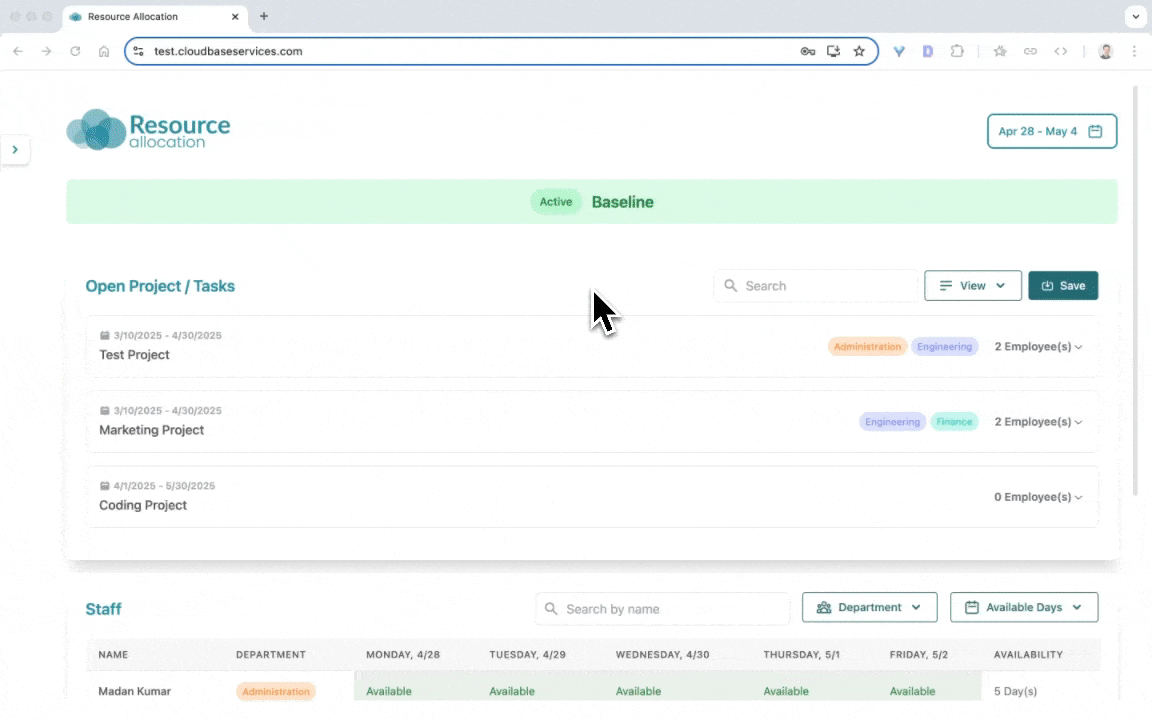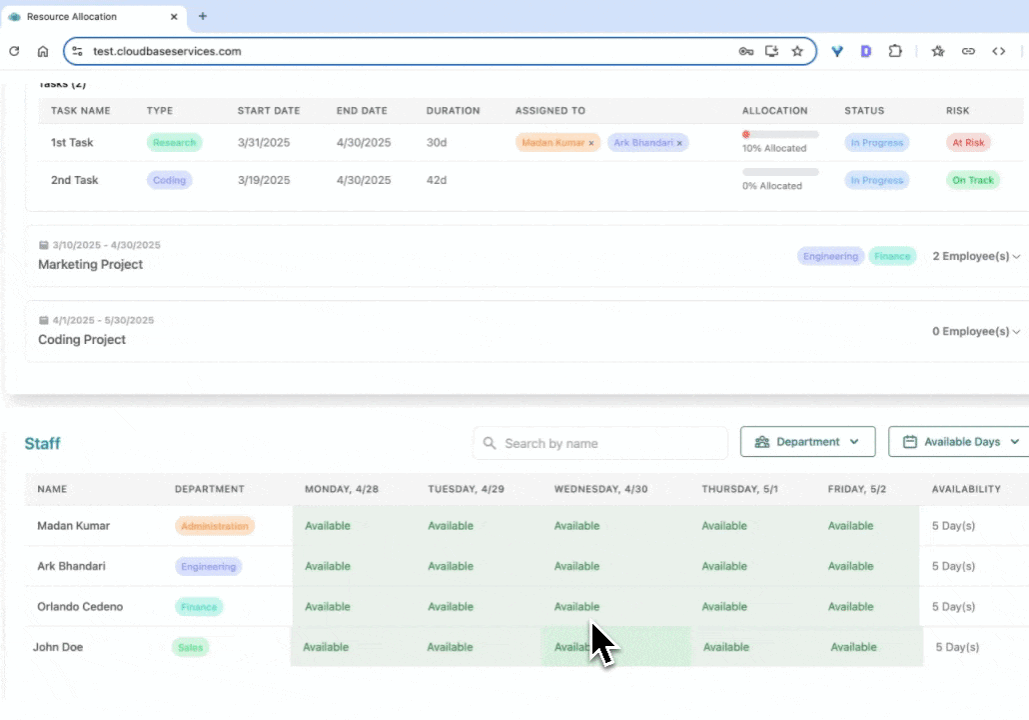Resource Allocation Tool
Assign staff, teams, or equipment to jobs with a visual drag-and-drop scheduler.
Make Decisions with Certainty
Managing staff assignments shouldn't be a guessing game. Our resource allocation tool lets you drag and drop people, teams, or equipment onto jobs, giving you a real-time, visual overview of your workforce. Whether you're assigning individuals or coordinating across departments, the app keeps everything organized and flexible enough to match your business.

Control Your Outcomes with Real-Time Visibility
As you plan, the app automatically updates each person’s utilization rate and shows the percentage of work covered, so you can see gaps before they cause delays. You can simulate different scenarios, compare outcomes, and save the best plan. Built-in notifications help teams stay informed, and timecard prep becomes seamless.
See Who Is Working on What, When — All in One Interface
By visualizing workload across roles and timelines, you’ll spot overcommitments and under-resourced projects early. This kind of clarity makes it easier to meet deadlines, balance workloads, and keep both employees and clients satisfied—all from one intuitive interface.

FAQ
Resource allocation software is a tool that helps you assign people, time, and other resources to projects in an optimal way. It provides a centralized view of who is working on what, making it easier to avoid overloading anyone or leaving any capacity unused. In practical terms, this software ensures your organization can schedule work effectively across teams and projects, leading to higher productivity and on-time project delivery. By using a resource allocation tool, even small organizations can eliminate the guesswork in planning and use their resources more efficiently.
Nonprofit organizations often have limited staff and budget, and resource allocation tools can help maximize these scarce resources. For example, the software allows nonprofits to schedule volunteers and staff across events and programs without conflicts, ensuring critical tasks are always covered. It provides visibility into everyone’s availability, so you can match the right people to the right projects (like pairing skilled volunteers with tasks that need their expertise). By streamlining planning, a resource allocation tool helps a nonprofit do more with what they have – reducing waste, preventing burnout of key team members, and ultimately furthering the nonprofit’s mission more effectively.
When evaluating resource allocation tools, look for features that will make planning and managing resources easier and more insightful. Key features to consider include:
-
Visual scheduling interface: A drag-and-drop calendar or timeline where you can assign tasks and adjust allocations easily.
-
Real-time availability & conflict alerts: The software should show who is available and flag any overbooking or scheduling conflicts automatically.
-
Reporting and analytics: Built-in reports (e.g. utilization rates, capacity forecasts) to help you analyze how resources are used and plan ahead.
-
Integration and scalability: The ability to integrate with your existing project management or calendar systems, and to scale up as your team or projects grow (useful for mid-sized companies and enterprises).
A good resource allocation software gives you a clear dashboard of everyone’s workload. This transparency means you can see at a glance if someone is assigned to too many tasks at once or if certain projects are understaffed. The software will typically warn you of overallocation – for instance, if Alice is booked for 10 hours on a day she only has 8 hours available, you’d get an alert. By catching these issues early, you can reassign or reschedule tasks before they cause burnout or project delays. In essence, the tool acts like an early warning system for scheduling problems, helping you keep workloads balanced and projects on track. Teams that use resource allocation tools often find they can predict bottlenecks and adjust in advance, rather than reacting late when a deadline slips.
To choose the right tool, start by considering your organization’s size and needs. A smaller team might prioritize ease of use, while an enterprise will look for advanced features like permission controls and integrations with other software. Next, outline the must-have features you need (for example, do you need time-tracking or budgeting in the same tool, or just resource scheduling?). Research a few reputable products and compare them on key factors: features, user-friendliness, customer support, and pricing. It’s very useful to read reviews or case studies from businesses similar to yours. Finally, take advantage of free trials or demos – getting hands-on experience will show you if the interface and functionality fit your team’s workflow. The right resource allocation software will feel intuitive to use and should clearly solve the resource planning challenges your business faces.

